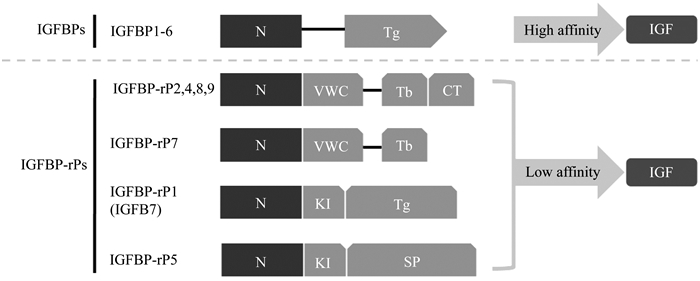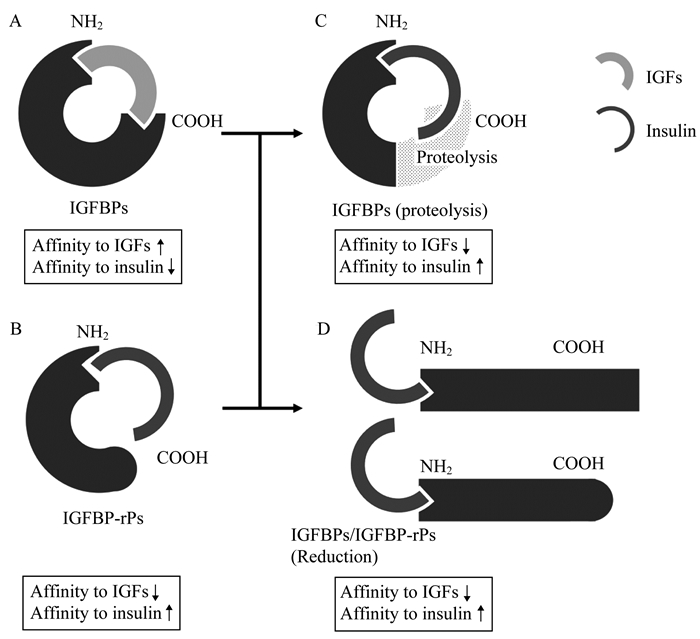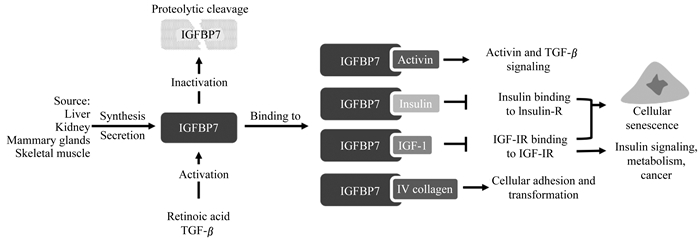2. 上海市肾病与透析研究所 上海 200032;
3. 上海市肾脏疾病与血液净化重点实验室 上海 200032
2. Kidney and Dialysis Institute of Shanghai, Shanghai 200032, China;
3. Kidney and Blood Purification Laboratory of Shanghai, Shanghai 200032, China
急性肾损伤(acute kidney injury,AKI)是指肾脏功能在短期内恶化(以肾小球滤过率快速下降为特点)的一组以代谢废物毒素蓄积、体液潴留、电解质酸碱平衡紊乱等为特征的临床综合征。根据全球AKI流行病学Meta分析显示,成年住院患者发病率为21.6%,病死率为23.9%。儿童住院患者发病率高达33.7%,病死率为13.8%[1]。2015年我国一项2 223 230例的多中心临床调查显示,AKI住院病死率为12.4%,另有16.1%的住院患者出院时仍有严重AKI,高达74.2%的AKI患者住院期间未被诊断,而被诊断的患者中有17.6%诊断滞后[2]。目前对AKI仍然没有有效的治疗方法,主要原因在于AKI发病原因复杂,难以精确预测或早期诊断。
生物标志物是临床预测和诊断AKI的重要指标,主要包括血肌酐、尿素氮、尿中性粒细胞明胶酶相关脂质运载蛋白(neutrophil gelatinase-associated lipocalin,NGAL)、肾损伤分子1(kidney injury molecule-1,KIM-1)、尿IL-18、金属蛋白酶组织抑制因子2(tissue inhibitors of metalloproteinase 2,TIMP2)和胰岛素样生长因子结合蛋白7(insulin-like growth factor binding protein 7,IGFBP7)等[3]。其中,尿液TIMP2和IGFBP7浓度的乘积([TIMP2]·[IGFBP7])在AKI早期显著升高,因此在预测AKI发生方面优于其他标志物[3]。[TIMP2]·[IGFBP7]在危重患者及心脏手术后患者AKI风险预测中表现良好[4-6],同时该指标能很好地预测脓毒血症AKI患者的预后结局[7],且一般合并症(如糖尿病、充血性心力衰竭、慢性肾脏病)不会影响这一指标对AKI的风险评估[8],其在2014年被FDA批准用于AKI的临床预测。但是,TIMP2和IGFBP7的生物学功能是什么,TIMP2和IGFBP7为何能够预测AKI的发生,二者在正常以及损伤后的肾脏中有何作用等问题都尚未明确。因此本文通过分析TIMP2和IGFBP7所属蛋白家族的特点及已报道的生物学功能,对TIMP2和IGFBP7在肾脏中除生物标志物之外的作用和功能进行深入解析。
TIMP2的生物学特征和功能
TIMPs家族与TIMP2 TIMP2属于TIMPs家族,该家族由4个成员组成(TIMP1~4),为内源性基质金属蛋白酶(matrix metalloproteinases,MMPs)的抑制因子。各成员对MMPs的抑制能力和范围存在差异,TIMP3的抑制作用最广泛,TIMP2其次,而TIMP1范围最窄(表 1)。TIMPs通过调控MMPs的活性调节细胞外基质的代谢、组织的重塑和细胞行为等生物过程;还通过非MMP依赖性途径参与细胞增殖、分化、凋亡、迁移、血管形成等生命过程,例如TIMP2/3具有调节细胞凋亡的作用[9]。
| Functions | TIMP1 | TIMP2 | TIMP3 | TIMP4 |
| Inhibition effect to MMP | Weak for MMP-14,-16,-19,-24 | All | All | Most |
| Inhibition effect to other MP | ADAM10 | ADAM12 | ADAM-10,12,17,28,33;ADAMTS-1,4,5;ADAMTS-2 | ADAM17,ADAM28 and ADAM33 |
| Interactions with pro-MMP | Pro-MMP-9 | Pro-MMP-2 | Pro-MMP-9 and Pro-MMP-2 | Pro-MMP-2 |
| Other binding partners | CD63 and LRP1 | α3β1 integrin and LRP1 | EFEMP1,VEGFR2 and angiotensin Ⅱ receptor | / |
| Apoptotic effects | - | -/+ | + | / |
| Angiogenesis effects | - | - | - | - |
| MP:Metalloproteinase;ADAM:A disintegrin and metalloprotease;ADAMTS:ADAM with thrombospondin motifs;LRP:Low-density lipoprotein receptor related protein;EFEMP:EGF-containing fibulin-like extracellular matrix protein;VEGFR:Vascular endothelial cell growth factor receptor. -:Negative;+:Positive;/:No effect or none. | ||||
在基因组中,TIMP1、3和4的编码基因与突触相关蛋白编码基因的内含子存在部分重合,而编码TIMP2的基因与编码DDC8(differential display clone 8)基因部分重合。DDC8在睾丸等组织中表达,与TIMP2共同参与精子生成、脑皮质损伤修复等过程[10]。
TIMP2的蛋白结构及表达部位 人TIMPs蛋白由N端和C端结构域组成[11]:N端中间区域的氨基酸序列极为保守,是结合MMPs的主要部位[12];C端结构域则在pro-MMP2激活过程中起重要作用[13]。TIMP2在正常机体内的多个器官中表达,多表达于生殖系统及膀胱中,而肾脏中较少[14]。
TIMP2对细胞增殖的影响及机制 TIMP2能够促进细胞增殖。在细胞质中,TIMP2的C端结构域与MMP2前体(pro-MMP2)结合形成复合物,在MMP14的作用下成为成熟的MMP2[13]。TIMP2同时对MMP2活性具有抑制作用,这受到细胞膜中TIMP2、细胞外基质以及MMP14三者含量的调控[9]。研究发现TIMP2通过激活蛋白激酶A(protein kinase A,PKA)及磷脂酰肌醇3-激酶(phosphatidylinositol 3-kinase,PI3K)信号途径促进细胞生长[15]。游离在细胞外的TIMP2通过结合细胞表面的MMP14,激活细胞外调节蛋白激酶1/2(extracellular regulated protein kinases 1/2,ERK1/2),促进细胞生长[16]。在肺腺癌中,TIMP2通过c-Src激酶的活化,激活黏着斑激酶(focal adhesion kinase,FAK)、PI3K/AKT、ERK1/2通路,促进肿瘤细胞增殖[17]。TIMP2基因敲除小鼠表现为中枢神经系统和肌生成缺陷,如神经元分化延迟、运动系统功能异常、肌力降低等[9]。
另一方面,TIMP2具有抑制细胞增殖的功能。TIMP2通过结合内皮细胞表面的α3β1整合素,抑制血管内皮生长因子A(vascular endothelial growth factor A,VEGF-A)和成纤维细胞生长因子2(fibroblast growth factor 2,FGF2)的激活,同时激活腺苷酸环化酶,增加细胞内环磷酸腺苷(cyclic adenosine monophosphate,cAMP)水平,激活含SH2结构域的蛋白酪氨酸磷酸酶1(SH2-containing protein tyrosine phosphatase-1,SHP-1),使VEGF/FGF受体去磷酸化[9, 18]。TIMP2通过促进p27Kip1的合成进而抑制CDK4(cyclin-dependent kinase 4)和CDK2,最终使内皮细胞周期停滞于G1期[18]。TIMP2通过抑制细胞周期蛋白B和D的表达,促进CDK抑制因子p21Cip的生成,抑制神经元细胞进入细胞周期,促进细胞分化[19]。TIMP2还可以通过抑制Wnt(wingless-type MMTV integration site family)/β-catenin通路来抑制肿瘤细胞的增殖[20]。除通过上述MMP非依赖机制外,TIMP2还可以通过抑制MMPs调节细胞外基质,抑制血管内皮细胞增殖,进而抑制血管形成[9, 18, 21]。
TIMP2在肾脏中的作用及其机制 TIMP2参与肾脏发育过程。输卵管芽通过分泌TIMP2抑制MMPs的活性,导致细胞外基质沉积,从而抑制输尿管芽的生长。胶质细胞系来源的神经营养因子(glial cell derived neurotrophic factor,GDNF)和成纤维细胞生长因子(fibroblast growth factor 7,FGF7)在肾脏发育早期通过促进输尿管芽分泌TIMP2,抑制肾间充质干细胞的凋亡[22]。
TIMP2参与肾脏免疫调节过程。在脂多糖诱导的人近端肾小管上皮细胞损伤以及AKI小鼠模型中,下调TIMP2可以抑制p65磷酸化,进而抑制NFκB(nuclear factor kappa B)通路,减少细胞因子释放和细胞凋亡,因而TIMP2下调在内毒素引起的AKI中对肾脏具有保护作用[23]。研究发现,在缺血或甘油诱导的肾损伤小鼠模型中,尿液TIMP2、IGFBP7含量明显上升,但肾脏中TIMP2和IGFBP7的mRNA水平并未增加,因而AKI发生时肾小管滤过增加、重吸收减少使近曲小管TIMP2和IGFBP7分泌量增加,而并非由TIMP2和IGFBP7表达量增加所致[24]。
IGFBP7的生物学特征和功能
IGFBPs家族与IGFBP7 胰岛素样生长因子(insulin-like growth factor,IGF)的结构与胰岛素相似,具有有丝分裂原的作用,可调控细胞增殖和代谢。根据与IGF的亲和性,IGF结合蛋白(IGF binding protein,IGFBP)超家族主要分为高亲和性的IGFBP1~6和低亲和性的IGFBP相关蛋白(IGFBP-related protein,IGFBP-rP),IGFBP7属于后者[25]。
IGFBPs结构和功能 传统意义上的IGFBPs(IGFBP1~6)富含半胱氨酸,由N端、中间区域、C端这3个结构域组成。其中N端、C端高度保守,中间区域具有可变性。N端含有一段极为保守的“GCGCCXXC”氨基酸序列,与IGF亲和力有关[26-29]。
IGFBP作为IGFs的转运蛋白,调节IGFs的功能与活性,延长IGFs在体液中的半衰期。IGFs若被定位在细胞膜上,IGFBP募集则有助于与IGF受体结合,而若被胞外游离的IGFBP结合则不利于与IGF受体结合[30]。这些作用通过IGFBP中间区域的磷酸化[31]和IGFBP蛋白酶降解等机制进行调节。IGFBP可以直接通过调节细胞分泌生长因子、与细胞表面非IGF受体直接作用、入核调控基因转录以及鞘磷脂作用途径等多种机制调控细胞凋亡、增殖、存活、衰老和自噬等过程[32-34]。
IGFBP-rP在结构和功能上与IGFBP1~6类似,因此也被列入IGFBP家族。IGFBP-rP具有保守的N端结构域,但是缺少C端结构域和中间结构域,虽然能够结合IGF但亲和力比IGFBP1~6低,因而被称为IGFBP-rP。成员包括IGFBP7、结缔组织生长因子(connective tissue growth factor,CTGF)、IGFBP-rP3和IGFBP-rP4[35-38]等。
IGFBP7的分布 IGFBP7分布非常广泛,在外周神经、平滑肌细胞(包括血管壁、消化道、膀胱、前列腺)、呼吸系统纤毛、附睾以及输卵管中都有较强的免疫荧光染色,各脏器中肾脏表达最多[14]。几乎所有的上皮细胞都有不同程度的IGFBP7表达,在血浆、尿液、羊水、脑脊液等体液中IGFBP7均可被检测到[39],但脂肪细胞、浆细胞和淋巴细胞内没有表达。肾脏中IGFBP7在不同细胞类型中的分布不同,其中肾小球表达量最低,远曲小管中的表达高于近端小管[40]。也有研究发现IGFBP7在近端小管表达较强,并且定位在部分近曲小管的刷状缘[41]。
IGFBP7的结构 IGFBP7的N端结构域具有IGFBP家族特点,含有“GCGCCXXC”肽段,而N端结构域之外的序列与IGFBP家族其他成员的同源性仅为15%[25]。近N端有一段氨基酸序列与Kazal家族丝氨酸蛋白酶相似,称为KI(Kazal-type serine proteinase inhibitor)结构域[25],这段序列还与卵泡抑素高度同源。KI结构域之后的序列与成纤维细胞生长因子受体中的免疫球蛋白样结构类似,该序列与硫酸乙酰蛋白肝素具有同源性[42](图 1)。传统IGFBP与IGF的结合需要N端和C端结构域共同参与。由于IGFBP7缺少C端结构域,IGFBP7与IGF的亲和力仅为传统IGFBPs的1%[43]。C端结构域的缺失还造成N端结构域中的胰岛素结合位点暴露[44](图 2),因而IGFBP7与胰岛素的亲和力比IGFBP家族其他成员更强。综上,IGFBP7可能通过非IGF途径发挥生物学功能。

|
| All IGFBPs (IGFBP1 to 6) are composed of N-terminal domain and Tg (thyroglobulin-type) C-terminal domain which are both conserved. All IGFBP-rPs are composed of conserved N-terminal domain and different C domains, which for IGFBP7 are VWC (von Willebrand factor type C repeat) and Tb (thrombospondin type Ⅰ repeat).CT: C-terminal domain; KI: Kazal-type serine proteinase inhibitor; Ig: Immunoglobulin-like domain; SP: Serine protease. 图 1 IGFBPs和IGFBP-rPs的构成与简化结构 Fig 1 The composition and simplified structure of IGFBPs and IGFBP-rPs |

|
| A: The IGFBPs bind IGFs with high affinity but insulin is not the proper binding partner because of less exposed binding structure; B: Due to more exposed binding structure, IGFBP-rPs bind IGFs with low affinity and bind insulin with equal or higher affinity; C: By proteolysis of IGFBPs, the affinity to IGFs becomes lower while the affinity to insulin becomes higher due to the exposed binding site; D: Through changes in the structure of IGFBPs/IGFBP-rPs after proteolysis or other treatment, the affinity to IGFs becomes lower while the affinity to insulin becomes higher because the binding site is revealed. 图 2 IGFBP/GFBP-rP与胰岛素结合机制 Fig 2 The mechanism of IGFBP/IGFBP-rP binding to IGF |
IGFBP7的功能及作用机制 IGFBP7参与细胞黏附和肿瘤细胞增殖等过程。转化生长因子β(transforming growth factor beta,TGF-β)和维甲酸等能上调前列腺上皮细胞中的IGFBP7[25]。同时,IGFBP降解后的N端片段仍具有细胞膜黏附的作用[45]。IGFBP7能够与Activin结合,调节腺体组织的生长发育和卵泡刺激素的生成[46]。IGFBP7能够与Ⅳ型胶原结合,促进脐静脉内皮细胞的黏附和形态改变[47]。IGFBP7定位于细胞表面,与蛋白聚糖作用,促进细胞黏附于纤连蛋白和黏连蛋白5等[48](图 3)。IGFBP7通过调控细胞周期参与细胞增殖。在肿瘤领域,IGFBP7可以通过抑制细胞周期蛋白D1和p21的表达,并促进细胞周期蛋白A、E、p16、p27表达[48-50],或通过抑制Akt的激酶活性,引起CDK抑制因子p27Kip1和p21Cip1上调[51],诱导细胞停滞于G0/G1期。细胞内过表达或细胞培养液中添加外源IGFBP7,可以通过非IGF-I受体、AKT、ERK途径诱导细胞停滞于G2期,进而导致细胞凋亡[52]。IGFBP7还可以通过提高SMARCB1(SWI/SNF related,matrix associated,actin dependent regulator of chromatin,subfamily B,member 1)水平,进而提高BNIP3L(BCL2 interacting protein 3 like)水平,同时抑制BRAF-MEK-ERK通路,诱导细胞衰老和凋亡[53]。IGFBP7还可以通过丝裂原活化蛋白激酶(mitogen-activated protein kinase,MAPK)通路抑制IGF对细胞的促分化作用,但不影响IGF的促增殖作用[54]。

|
| IGFBP7 is expressed in various tissues including liver, kidney, mammary glands and skeletal muscle and is secreted into circulation. It can bind to insulin, IGF-I, activin and type Ⅳ collagen. Through binding to the ligands for insulin and IGF-I receptors, IGFBP7 shows an antagonist effect to mitogenic signaling and induces senescence. It can also regulate the development of some glandular cells by binding to activin and cellular adhesion/ transformation by binding to type Ⅳ collagen. IGFBP7 can be induced by retinoic acid and TGF-β while reduced by proteolytic cleavage involving a trypsin-like serine proteinase. 图 3 IGFBP7的作用与调节 Fig 3 The functions and regulation of IGFBP7 |
IGFBP7在肾脏损伤中的作用 IGFBP7参与多种肾脏病的发生发展。败血症引起的AKI中,IGFBP7通过激活ERK1/2及通路相关蛋白,如细胞周期蛋白D、p21、Bcl-2、Bax(BCL2 associated X),诱导细胞停滞于G0/G1期[55]。在糖尿病肾病中,TGF-β1通过SMAD2(a family of proteins similar to the drosophila mothers against decapentaplegic,member 2)和SMAD4上调IGFBP7表达,同时上皮标志物E-cadherin下调,间充质标志物α平滑肌肌动蛋白(α smooth muscle actin,α-SMA)上调。IGFBP7的敲除可以抑制TGF-β1诱导的上皮向间充质细胞转化,缓解肾纤维化[56],这与IGFBP7在肝纤维化中的实验结果一致[57],这一机制在糖尿病肾病的肾纤维化中也存在[58]。
综上所述,TIMP2和IGFBP7都参与细胞的增殖和凋亡过程[59-60],目前研究集中在肿瘤领域,而缺少肾损伤领域的研究。今后的研究重点:(1)TIMP2和IGFBP7在AKI引起细胞周期停滞中的作用;(2)TIMP2和IGFBP7为何上调,如何反映肾脏损伤,能否作为治疗靶点;(3)基于TIMP2、IGFBP7细胞周期抑制/促进机制、表达分布差异、随肾损伤程度的变化、蛋白分布的变化等研究,有助于指导对肾损伤不同病因、不同程度、不同部位(如近端小管、远端小管、集合管或间质)的诊断。
结语 TIMP2和IGFBP7本身功能多样、作用机制复杂,与细胞增殖和凋亡的关系密切。在AKI发生早期,二者在尿液中的含量显著升高,TIMP2可能通过结合α3β1整合素受体、促进p27Kip1和p21Cip合成、Wnt/β-catenin通路等机制调控细胞周期;IGFBP7可能通过与Ⅳ型胶原结合、与蛋白聚糖作用参与细胞黏附,通过调节p21、p27、ERK1/2等蛋白参与细胞增殖。尿液中二者的增加也可能是由肾小管上皮细胞分泌/重吸收功能的异常所引起。在AKI中下调TIMP2对肾脏有潜在的保护作用,上调IGFBP7则具有潜在促进纤维化的作用。TIMP2与IGFBP7作为目前FDA认证的临床AKI早期标志物,研究其在AKI过程中的生物学功能,对AKI的早期诊断及治疗具有重要的指导意义。
作者贡献声明 张杨 文献调研,图表绘制,论文构思、撰写和修订。王一梅,姜物华 论文校审和修订。赵栓,丁小强 论文指导和修订。
利益冲突声明 所有作者均声明不存在利益冲突。
| [1] |
SUSANTITAPHONG P, CRUZ DN, CERDA J, et al. World incidence of AKI: a meta-analysis[J]. Clin J Am Soc Nephrol, 2013, 8(9): 1482-1493.
[DOI]
|
| [2] |
YANG L, XING G, WANG L, et al. Acute kidney injury in China: a cross-sectional survey[J]. Lancet, 2015, 386(10002): 1465-1471.
[DOI]
|
| [3] |
SCHIFFL H. Cell cycle arrest biomarkers for the early prediction of acute kidney injury-full of promise, but not a must-have for yet[J]. J Renal Inj Prev, 2017, 6(3): 177-183.
|
| [4] |
BIHORAC A, CHAWLA LS, SHAW AD, et al. Validation of cell-cycle arrest biomarkers for acute kidney injury using clinical adjudication[J]. Am J Respir Crit Care Med, 2014, 189(8): 932-939.
[DOI]
|
| [5] |
MEERSCH M, SCHMIDT C, VAN AKEN H, et al. Urinary TIMP-2 and IGFBP7 as early biomarkers of acute kidney injury and renal recovery following cardiac surgery[J]. PLoS One, 2014, 9(3): e93460.
[DOI]
|
| [6] |
GUNNERSON KJ, SHAW AD, CHAWLA LS, et al. [TIMP2] •[IGFBP7] biomarker panel accurately predicts acute kidney injury in high-risk surgical patients[J]. J Trauma Acute Care Surg, 2016, 80(2): 243-249.
[DOI]
|
| [7] |
FIORENTINO M, XU Z, SMITH A, et al. Serial measurement of cell-cycle arrest biomarkers[TIMP-2] •[IGFBP7] and risk for progression to death, dialysis or severe acute kidney injury in patients with septic shock[J]. Am J Respir Crit Care Med, 2020, 202(9): 1262-1270.
[DOI]
|
| [8] |
HEUNG M, ORTEGA LM, CHAWLA LS, et al. Common chronic conditions do not affect performance of cell cycle arrest biomarkers for risk stratification of acute kidney injury[J]. Nephrol Dial Transplant, 2016, 31(10): 1633-1640.
[DOI]
|
| [9] |
BREW K, NAGASE H. The tissue inhibitors of metalloproteinases (TIMPs): an ancient family with structural and functional diversity[J]. Biochim Biophys Acta Mol Cell Res, 2010, 1803(1): 55-71.
[DOI]
|
| [10] |
JAWORSKI DM, BEEM-MILLER M, LLURI G, et al. Potential regulatory relationship between the nested gene DDC8 and its host gene tissue inhibitor of metalloproteinase-2[J]. Physiol Genomics, 2007, 28(2): 168-178.
[DOI]
|
| [11] |
BREW K, DINAKARPANDIAN D, NAGASE H. Tissue inhibitors of metalloproteinases: evolution, structure and function[J]. Biochim Biophys Acta, 2000, 1477(1-2): 267-283.
[DOI]
|
| [12] |
MURPHY G, HOUBRECHTS A, COCKETT MI, et al. The N-terminal domain of tissue inhibitor of metalloproteinases retains metalloproteinase inhibitory activity[J]. Biochemistry, 1991, 30(33): 8097-8101.
[DOI]
|
| [13] |
WORLEY JR, THOMPKINS PB, LEE MH, et al. Sequence motifs of tissue inhibitor of metalloproteinases 2(TIMP-2) determining progelatinase A (proMMP-2) binding and activation by membrane-type metalloproteinase 1(MT1-MMP)[J]. Biochem J, 2003, 372: 799-809.
[DOI]
|
| [14] |
FAGERBERG L, HALLSTROM BM, OKSVOLD P, et al. Analysis of the human tissue-specific expression by genome-wide integration of transcriptomics and antibody-based proteomics[J]. Mol Cell Proteomics, 2014, 13(2): 397-406.
[DOI]
|
| [15] |
WANG T, YAMASHITA K, IWATA K, et al. Both tissue inhibitors of metalloproteinases-1(TIMP-1) and TIMP-2 activate Ras but through different pathways[J]. Biochem Biophys Res Commun, 2002, 296(1): 201-205.
[DOI]
|
| [16] |
D'ALESSIO S, FERRARI G, CINNANTE K, et al. Tissue inhibitor of metalloproteinases-2 binding to membrane-type 1 matrix metalloproteinase induces MAPK activation and cell growth by a non-proteolytic mechanism[J]. J Biol Chem, 2008, 283(1): 87-99.
[DOI]
|
| [17] |
KIM HI, LEE HS, KIM TH, et al. Growth-stimulatory activity of TIMP-2 is mediated through c-Src activation followed by activation of FAK, PI3-kinase/AKT, and ERK1/2 independent of MMP inhibition in lung adenocarcinoma cells[J]. Oncotarget, 2015, 6(40): 42905-42922.
[DOI]
|
| [18] |
SEO DW, LI HM, QU CK, et al. Shp-1 mediates the antiproliferative activity of tissue inhibitor of metalloproteinase-2 in human microvascular endothelial cells[J]. J Biol Chem, 2006, 281(6): 3711-3721.
[DOI]
|
| [19] |
PEREZ-MARTINEZ L, JAWORSKI DM. Tissue inhibitor of metalloproteinase-2 promotes neuronal differentiation by acting as an anti-mitogenic signal[J]. J Neurosci, 2005, 25(20): 4917-4929.
[DOI]
|
| [20] |
XIA Y, WU S. Tissue inhibitor of metalloproteinase 2 inhibits activation of the beta-catenin signaling in melanoma cells[J]. Cell Cycle, 2015, 14(11): 1666-1674.
[DOI]
|
| [21] |
SEO DW, LI H, GUEDEZ L, et al. TIMP-2 mediated inhibition of angiogenesis: an MMP-independent mechanism[J]. Cell, 2003, 114(2): 171-180.
[DOI]
|
| [22] |
BARASCH J, YANG J, QIAO J, et al. Tissue inhibitor of metalloproteinase-2 stimulates mesenchymal growth and regulates epithelial branching during morphogenesis of the rat metanephros[J]. J Clin Invest, 1999, 103(9): 1299-1307.
[DOI]
|
| [23] |
LI YM, ZHANG J, SU LJ, et al. Downregulation of TIMP2 attenuates sepsis-induced AKI through the NF-kappa b pathway[J]. Biochim Biophys Acta Mol Basis Dis, 2019, 1865(3): 558-569.
[DOI]
|
| [24] |
JOHNSON ACM, ZAGER RA. Mechanisms underlying increased TIMP2 and IGFBP7 urinary excretion in experimental AKI[J]. J Am Soc Nephrol, 2018, 29(8): 2157-2167.
[DOI]
|
| [25] |
HWA V, OH Y, ROSENFELD RG. The insulin-like growth factor-binding protein (IGFBP) superfamily[J]. Endocr Rev, 1999, 20(6): 761-787.
|
| [26] |
NEUMANN GM, MARINARO JA, BACH LA. Identification of O-glycosylation sites and partial characterization of carbohydrate structure and disulfide linkages of human insulin-like growth factor binding protein 6[J]. Biochemistry, 1998, 37(18): 6572-6585.
[DOI]
|
| [27] |
SPENCER EM, CHAN K. A 3-dimensional model for the insulin-like growth factor binding proteins (IGFBPs); supporting evidence using the structural determinants of the IGF binding site on IGFBP-3[J]. Prog Growth Factor Res, 1996, 6(2-4): 209-214.
|
| [28] |
HASHIMOTO R, ONO M, FUJIWARA H, et al. Binding sites and binding properties of binary and ternary complexes of insulin-like growth factor-Ⅱ (IGF-Ⅱ), IGF-binding protein-3, and acid-labile subunit[J]. J Biol Chem, 1997, 272(44): 27936-27942.
[DOI]
|
| [29] |
JONES JI, DOERR ME, CLEMMONS DR. Cell migration: interactions among integrins, IGFs and IGFBPs[J]. Prog in Growth Factor Res, 1996, 6(2-4): 319-327.
|
| [30] |
GLUCKMAN PD. Insulin-like growth factors and their binding proteins[M]//RODECK CH, HANSON MA, SPENCER JAD. Fetus and Neonate: Physiology and Clinical Applications: Volume 3, Growth. Cambridge: Cambridge University Press, 1995: 97-116.
|
| [31] |
JONES JI, BUSBY JR WH, WRIGHT G, et al. Identification of the sites of phosphorylation in insulin-like growth factor binding protein-1.Regulation of its affinity by phosphorylation of serine 101[J]. J Biol Chem, 1993, 268(2): 1125-1131.
[DOI]
|
| [32] |
LEAL SM, LIU QJ, HUANG SS, et al. The type V transforming growth factor beta receptor is the putative insulin-like growth factor-binding protein 3 receptor[J]. J Biol Chem, 1997, 272(33): 20572-20576.
[DOI]
|
| [33] |
BACH LA. What happened to the IGF binding proteins?[J]. Endocrinology, 2018, 159(2): 570-578.
[DOI]
|
| [34] |
BAXTER RC. IGF binding proteins in cancer: mechanistic and clinical insights[J]. Nat Rev Cancer, 2014, 14(5): 329-341.
[DOI]
|
| [35] |
BAXTER RC, BINOUX M, CLEMMONS DR, et al. Recommendations for nomenclature of the insulin like growth factor binding protein (IGFBP) superfamily[J]. Growth Horm IGF Res, 1998, 8(3): 273-274.
[DOI]
|
| [36] |
MURPHY M, PYKETT MJ, HARNISH P, et al. Identification and characterization of genes differentially expressed in meningiomas[J]. Cell Growth Differ, 1993, 4(9): 715-722.
|
| [37] |
AKAOGI K, OKABE Y, FUNAHASHI K, et al. Cell-adhesion activity of a 30-kDa major secreted protein from human bladder-carcinoma cells[J]. Biochem Biophys Res Commun, 1994, 198(3): 1046-1053.
[DOI]
|
| [38] |
YAMAUCHI T, UMEDA F, MASAKADO M, et al. Purification and molecular-cloning of prostacyclin-stimulating factor from serum-free conditioned medium of human-diploid fibroblast cells[J]. Biochem J, 1994, 303: 591-598.
[DOI]
|
| [39] |
LOPEZ-BERMEJO A, KHOSRAVI J, CORLESS CL, et al. Generation of anti-insulin-like growth factor-binding protein-related protein 1(IGFBP-rP1/MAC25) monoclonal antibodies and immunoassay: quantification of IGFBP-rP1 in human serum and distribution in human fluids and tissues[J]. J Clin Endocrinol Metab, 2003, 88(7): 3401-3408.
[DOI]
|
| [40] |
DEGEORGES A, WANG F, FRIERSON HF, et al. Distribution of IGFBP-rP1 in normal human tissues[J]. J Histochem Cytochem, 2000, 48(6): 747-754.
[DOI]
|
| [41] |
EMLET DR, PASTOR-SOLER N, MARCISZYN A, et al. Insulin-like growth factor binding protein 7 and tissue inhibitor of metalloproteinases-2:differential expression and secretion in human kidney tubule cells[J]. Am J Physiol Renal Physiol, 2017, 312(2).
|
| [42] |
DIONNE CA, CRUMLEY G, BELLOT F, et al. Cloning and expression of 2 distinct high-affinity receptors cross-reacting with acidic and basic fibroblast growth-factors[J]. EMBO J, 1990, 9(9): 2685-2692.
[DOI]
|
| [43] |
OH YM, NAGALLA SR, YAMANAKA Y, et al. Synthesis and characterization of insulin-like growth factor-binding protein (IGFBP)-7-Recombinant human mac25 protein specifically binds IGF-Ⅰ and Ⅱ[J]. J Biol Chem, 1996, 271(48): 30322-30325.
[DOI]
|
| [44] |
YAMANAKA Y, WILSON EM, ROSENFELD RG, et al. Inhibition of insulin receptor activation by insulin-like growth factor binding proteins[J]. J Biol Chem, 1997, 272(49): 30729-30734.
[DOI]
|
| [45] |
AHMED S, YAMAMOTO K, SATO Y, et al. Proteolytic processing of IGFBP-related protein-1(TAF/angiomodulin/mac25) modulates its biological activity[J]. Biochem Biophys Res Commun, 2003, 310(2): 612-618.
[DOI]
|
| [46] |
JERUSS JS, STURGIS CD, RADEMAKER AW, et al. Down-regulation of activin, activin receptors, and Smads in high-grade breast cancer[J]. Cancer Res, 2003, 63(13): 3783-3790.
|
| [47] |
BURGER AM, LEYLAND-JONES B, BANERJEE K, et al. Essential roles of IGFBP-3 and IGFBP-rP1 in breast cancer[J]. Eur J Cancer, 2005, 41(11): 1515-1527.
[DOI]
|
| [48] |
SATO Y, CHEN Z, MIYAZAKI K. Strong suppression of tumor growth by insulin-like growth factor-binding protein-related protein 1/tumor-derived cell adhesion factor/mac25[J]. Cancer Sci, 2007, 98(7): 1055-1063.
[DOI]
|
| [49] |
SPRENGER CC, VAIL ME, EVANS K, et al. Over-expression of insulin-like growth factor binding protein-related protein-1(IGFBP-rP1/mac25) in the M12 prostate cancer cell line alters tumor growth by a delay in G1 and cyclin A associated apoptosis[J]. Oncogene, 2002, 21(1): 140-147.
[DOI]
|
| [50] |
ZUO S, LIU C, WANG J, et al. IGFBP-rP1 induces p21 expression through a p53-independent pathway, leading to cellular senescence of MCF-7 breast cancer cells[J]. J Cancer Res Clin Oncol, 2012, 138(6): 1045-1055.
[DOI]
|
| [51] |
ZHANG L, LIAN R, ZHAO J, et al. IGFBP7 inhibits cell proliferation by suppressing AKT activity and cell cycle progression in thyroid carcinoma[J]. Cell Biosci, 2019, 9: 44.
[DOI]
|
| [52] |
VERHAGEN HJMP, DE LEEUW DC, ROEMER MGM, et al. IGFBP7 induces apoptosis of acute myeloid leukemia cells and synergizes with chemotherapy in suppression of leukemia cell survival[J]. Cell Death Dis, 2014, 5(6): e1300.
[DOI]
|
| [53] |
WAJAPEYEE N, SERRA RW, ZHU X, et al. Oncogenic BRAF induces senescence and apoptosis through pathways mediated by the secreted protein IGFBP7[J]. Cell, 2008, 132(3): 363-374.
[DOI]
|
| [54] |
HAUGK KL, WILSON HM, SWISSHELM K, et al. Insulin-like growth factor (IGF)-binding protein-related protein-1:an autocrine/paracrine factor that inhibits skeletal myoblast differentiation but permits proliferation in response to IGF[J]. Endocrinology, 2000, 141(1): 100-110.
[DOI]
|
| [55] |
WANG X, MA T, WAN X, et al. IGFBP7 regulates sepsis-induced acute kidney injury through ERK1/2 signaling[J]. J Cell Biochem, 2019, 120(5): 7602-7611.
[DOI]
|
| [56] |
WATANABE J, TAKIYAMA Y, HONJYO J, et al. Role of IGFBP7 in diabetic nephropathy: TGF-beta 1 induces IGFBP7 via Smad2/4 in human renal proximal tubular epithelial cells[J]. PLoS One, 2016, 11(3): e0150897.
[DOI]
|
| [57] |
LIU LX, HUANG S, ZHANG QQ, et al. Insulin-like growth factor binding protein-7 induces activation and transdifferentiation of hepatic stellate cells in vitro[J]. World J Gastroenterol, 2009, 15(26): 3246-3253.
[DOI]
|
| [58] |
CAI XJ, WANG L, WANG XL, et al. Silence of IGFBP7 suppresses apoptosis and epithelial mesenchymal transformation of high glucose induced-podocytes[J]. Exp Ther Med, 2018, 16(2): 1095-1102.
|
| [59] |
YANG L, BESSCHETNOVA TY, BROOKS CR, et al. Epithelial cell cycle arrest in G2/M mediates kidney fibrosis after injury[J]. Nat Med, 2010, 16(5): 535.
[DOI]
|
| [60] |
ANDRADE L, RODRIGUES CE, GOMES SA, et al. Acute kidney injury as a condition of renal senescence[J]. Cell Transplant, 2018, 27(5): 739-753.
[DOI]
|
 2021, Vol. 48
2021, Vol. 48


